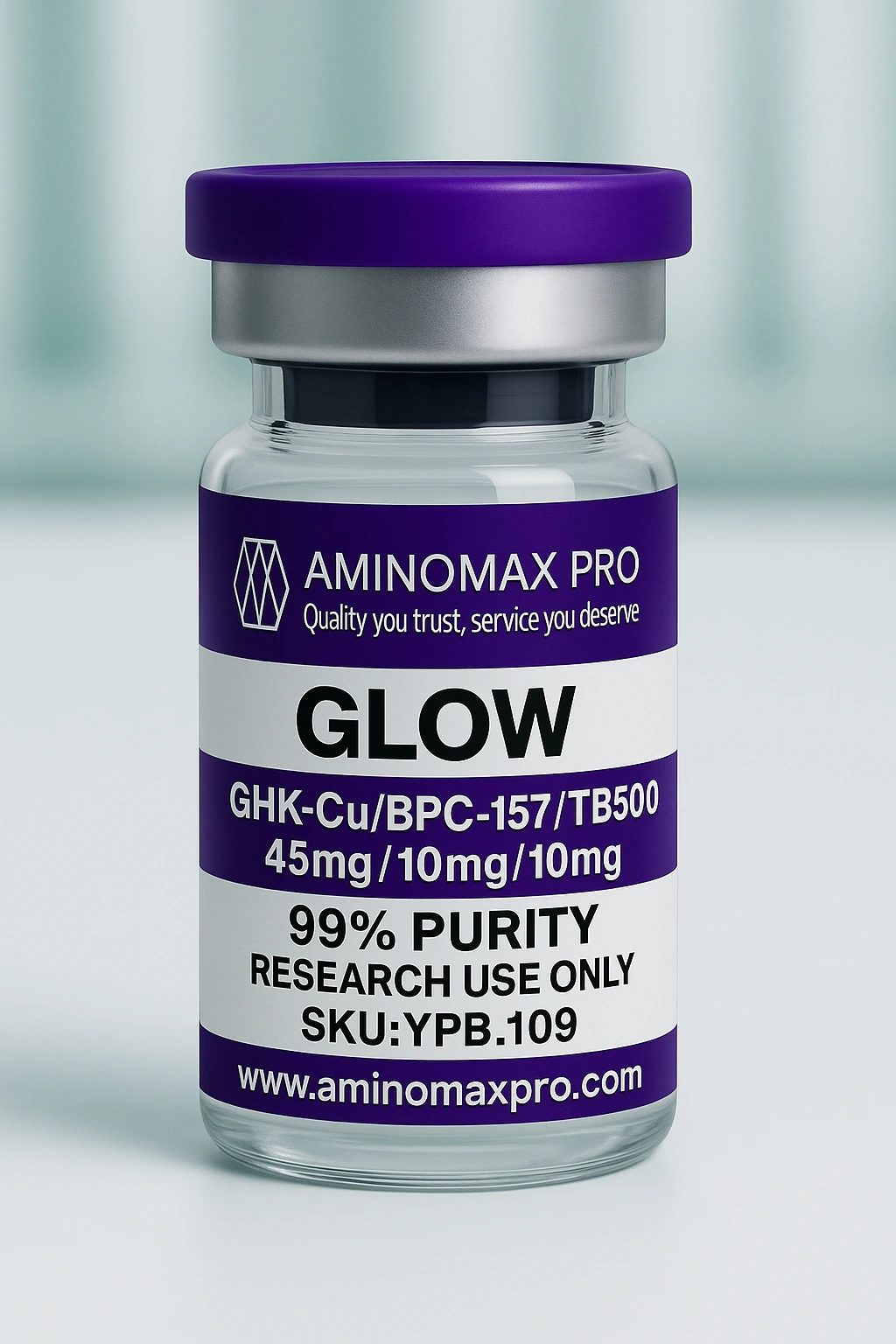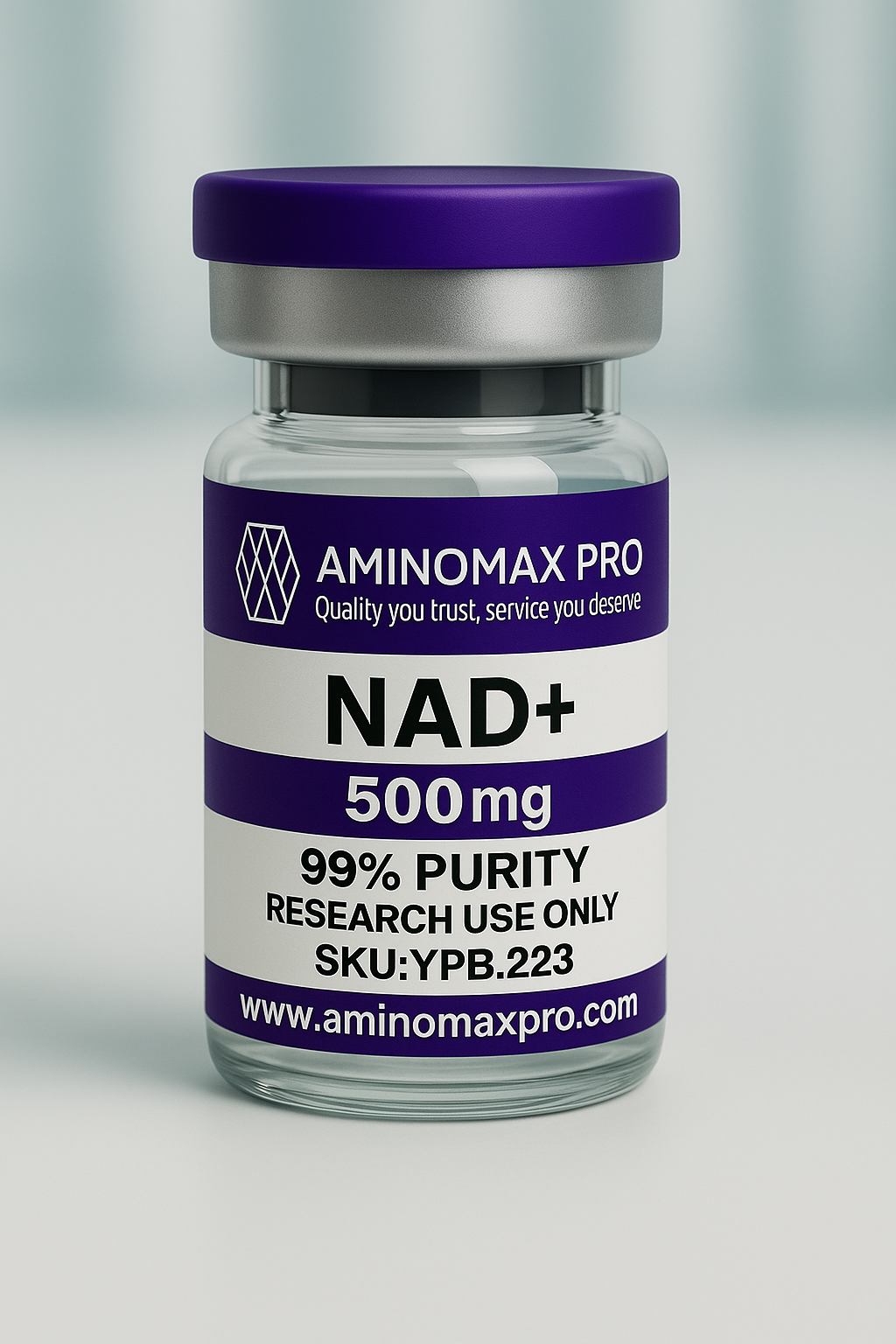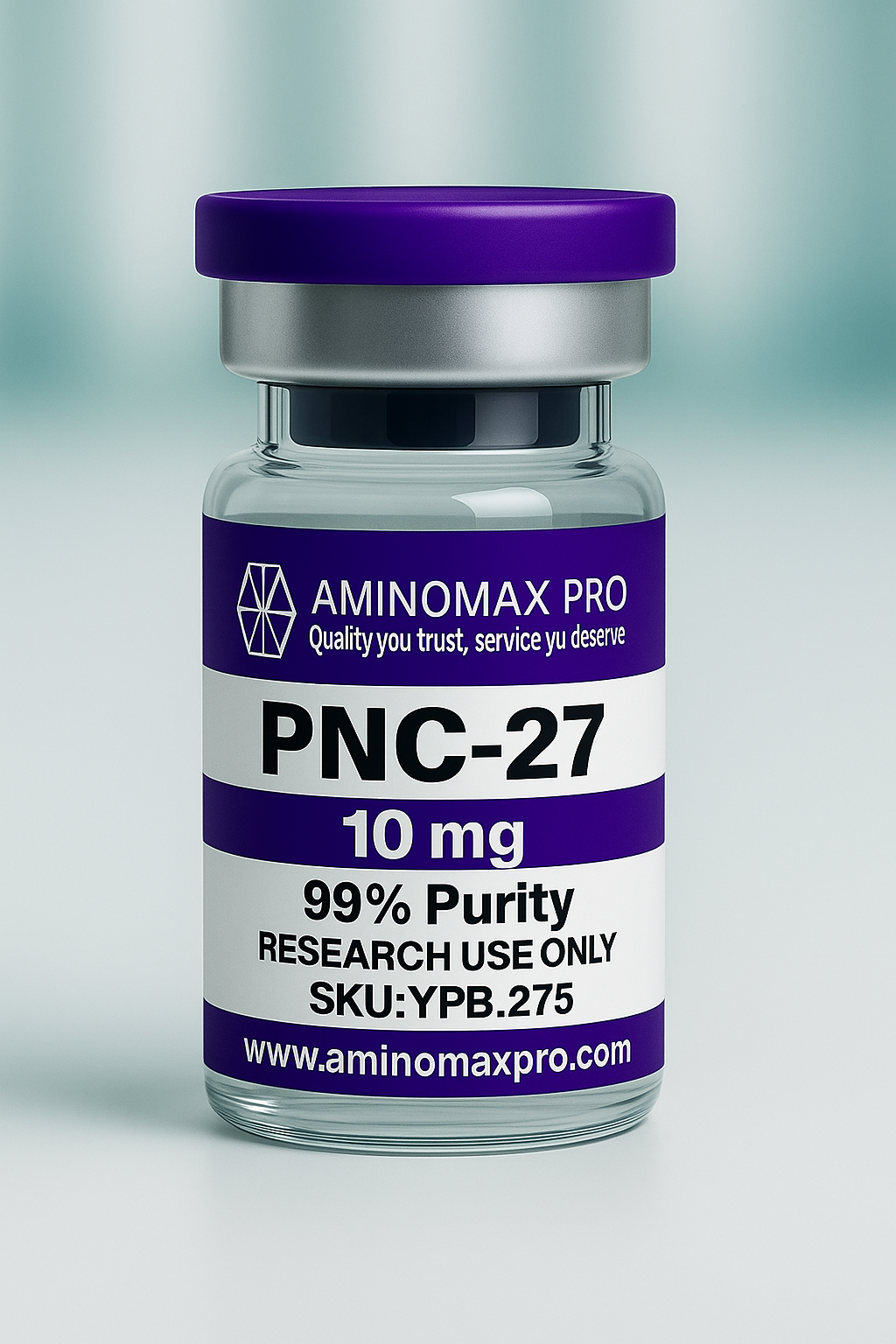Description
GLOW Blend – Advanced Biochemical Mechanism Profile
GHK-Cu (45 mg) / BPC-157 (10 mg) / TB-500 (10 mg)
Copper peptide + cytoprotective peptide + actin-binding peptide
This blend combines three research peptides frequently examined for their complementary roles in extracellular matrix (ECM) signaling, cytoskeletal dynamics, and transcriptional regulation.
✅ 1. GHK-Cu
Tripeptide copper-transport complex
Primary Biochemical Actions
-
High affinity binding of Cu²⁺, supporting copper delivery to enzymatic systems
-
Interacts with integrins, heparan sulfate proteoglycans, and ECM proteins
Enzyme & Pathway Targets
-
Lysyl oxidase (LOX) → crosslinking of collagen/elastin
-
Cu/Zn-SOD → antioxidant enzyme regulation
-
MMP/TIMP signaling → matrix remodeling
-
TGF-β/SMAD2/3 → ECM gene transcription
Genes frequently monitored
-
COL1A1, COL3A1, ELN, FN1 (matrix production)
-
TIMP1/2, MMP-2/9 (protease regulation)
-
SOD1, GPX1, HMOX1 (antioxidant response)
-
Anti-inflammatory transcription ↓ NF-κB–dependent cytokines
✅ 2. BPC-157
Pentadecapeptide studied in angiogenesis, tight-junction stability, and cytoskeletal regulation
Receptor/Pathway Profiles
BPC-157 does not rely on a single classical receptor; research indicates indirect modulation of:
-
eNOS → NO/cGMP signaling
-
VEGFR2 → angiogenic signaling
-
FAK/SRC phosphorylation → cell migration & cytoskeletal remodeling
-
MAPK (ERK1/2, p38, JNK)
-
NF-κB suppression in inflammatory models
Gene & Protein Targets
-
VEGFA, KDR (VEGFR2) → endothelial proliferation/migration
-
ZO-1, Claudin, Occludin → tight-junction proteins
-
IL-1β, TNF-α, COX-2 → inflammatory gene modulation
-
β-catenin & integrin-linked genes → cytoskeleton organization
✅ 3. TB-500 (Thymosin Beta-4 fragment)
Actin-binding G-actin sequestering peptide
Primary Mechanisms
-
Binds G-actin → increases G-actin pool availability
-
Regulates F-actin polymerization, lamellipodia and filopodia formation
-
Supports cell migration and ECM remodeling models
Signaling & Enzyme Targets
-
FAK and integrin-linked kinase (ILK) pathways
-
Matrix metalloproteinases (MMP-2, MMP-9)
-
TGF-β1/SMAD signaling
-
Modulation of eNOS/NO signaling in endothelial studies
Gene Targets
-
ACTB / ACTG1 (actin cytoskeletal genes)
-
COL1A1 / FN1 (matrix genes)
-
MMP-2/MMP-9 and TIMP1
-
Anti-inflammatory transcriptional suppression via NF-κB
✅ Synergistic Mechanistic Areas
Because all three peptides converge on ECM and cytoskeletal pathways, research commonly evaluates:
| Functional Area | Contributing Component | Molecular Targets |
|---|---|---|
| Collagen & elastin synthesis | GHK-Cu | COL1A1, COL3A1, ELN, LOX |
| Angiogenesis & endothelial migration | BPC-157, TB-500 | VEGFA, VEGFR2, eNOS, FAK |
| Cytoskeletal reorganization | TB-500, BPC-157 | G-actin, F-actin, SRC/FAK |
| Protease balance | GHK-Cu & TB-500 | MMP-2/9, TIMP1/2 |
| Inflammatory gene suppression | GHK-Cu & BPC-157 | NF-κB, COX-2, IL-1β, TNF-α |
✅ Key Molecular Targets (Condensed)
-
Enzymes: LOX, Cu/Zn-SOD, MMP-2/9, eNOS, FAK, SRC
-
Second Messengers: NO/cGMP, ERK1/2, p38, JNK, SMAD2/3
-
Genes: COL1A1, COL3A1, ELN, FN1, VEGFA, TIMP1/2, ZO-1, SOD1, GPX1
Research-Only Classification
This blend is provided strictly for controlled in-vitro laboratory research.
Not for human or animal use, ingestion, injection, or therapeutic application.







Reviews
There are no reviews yet.